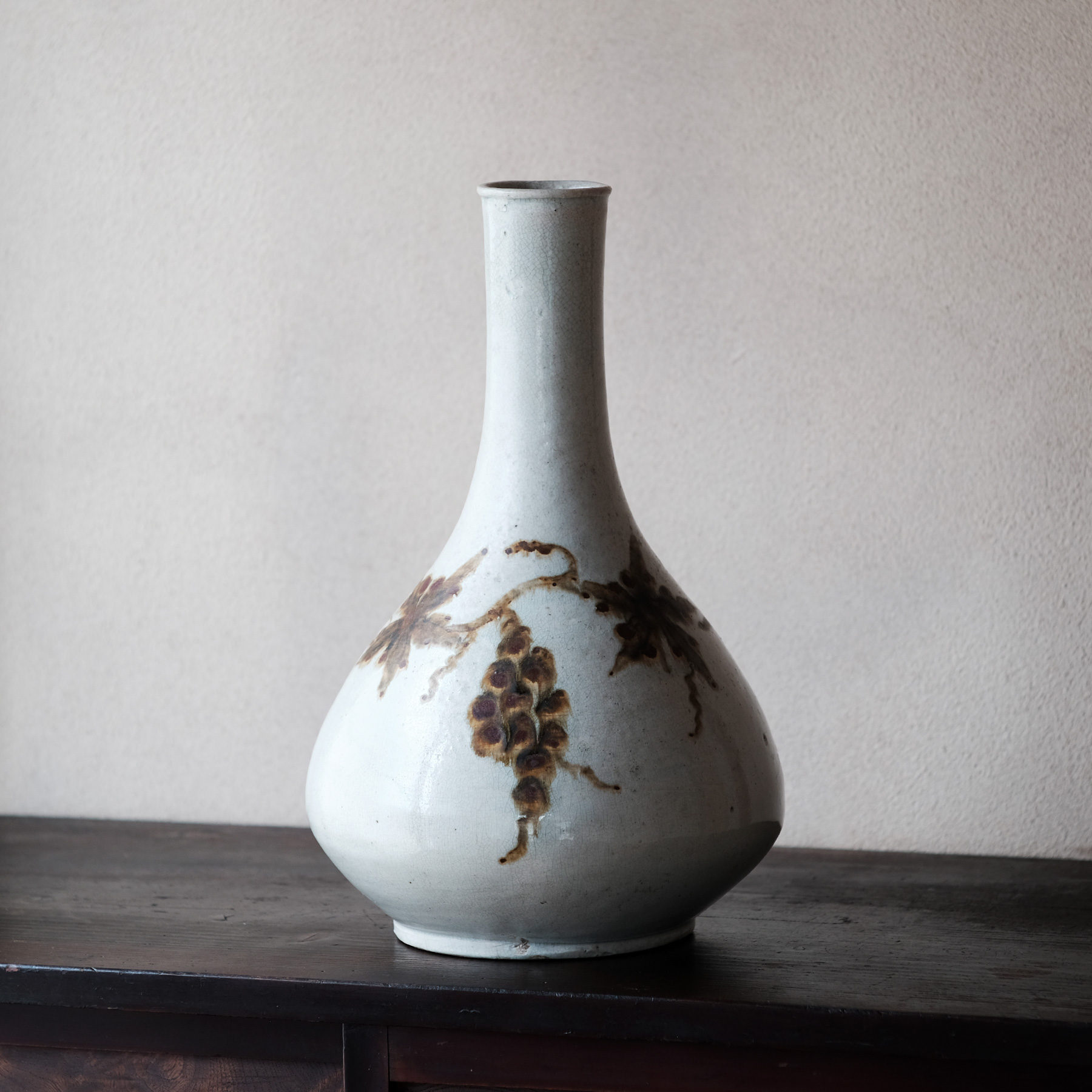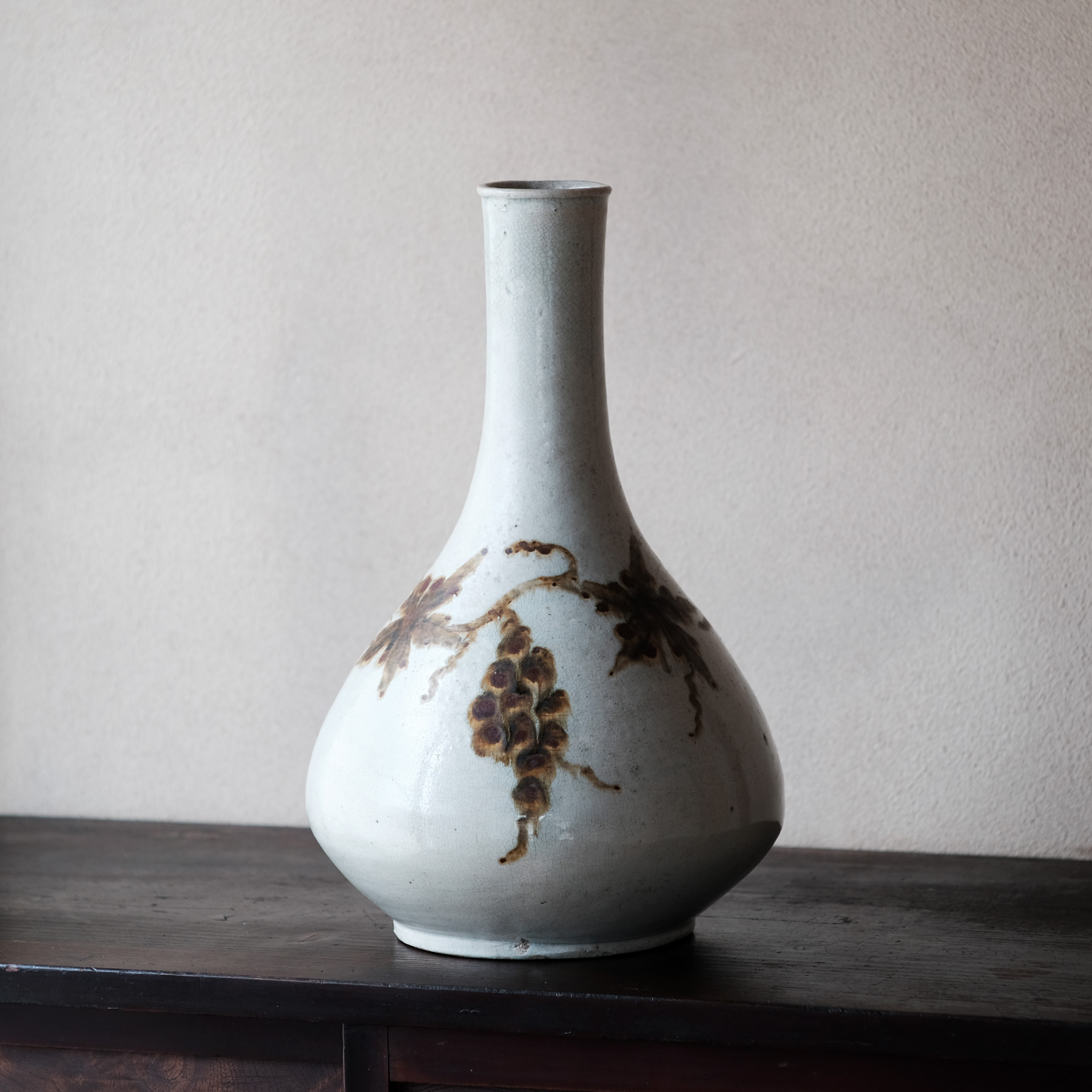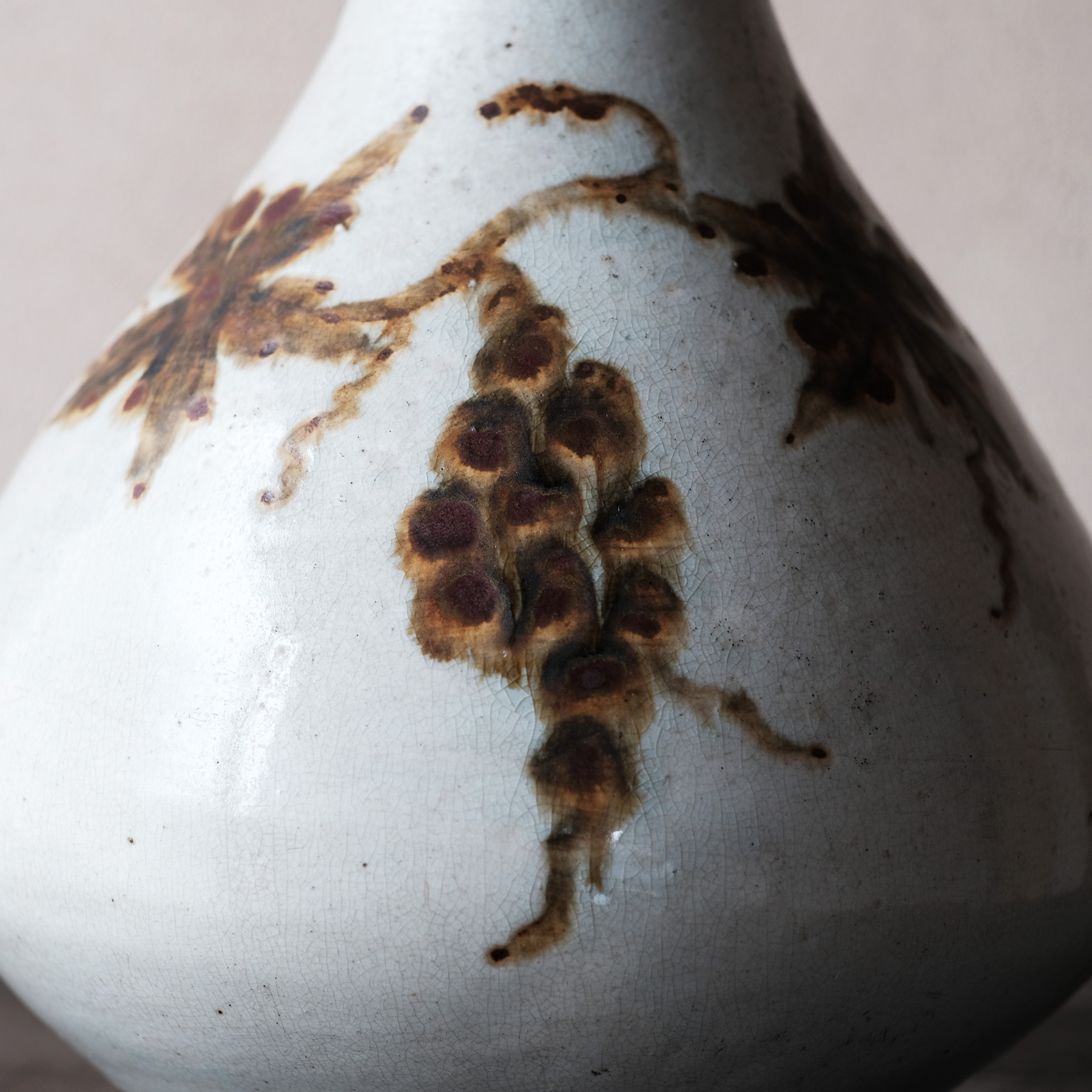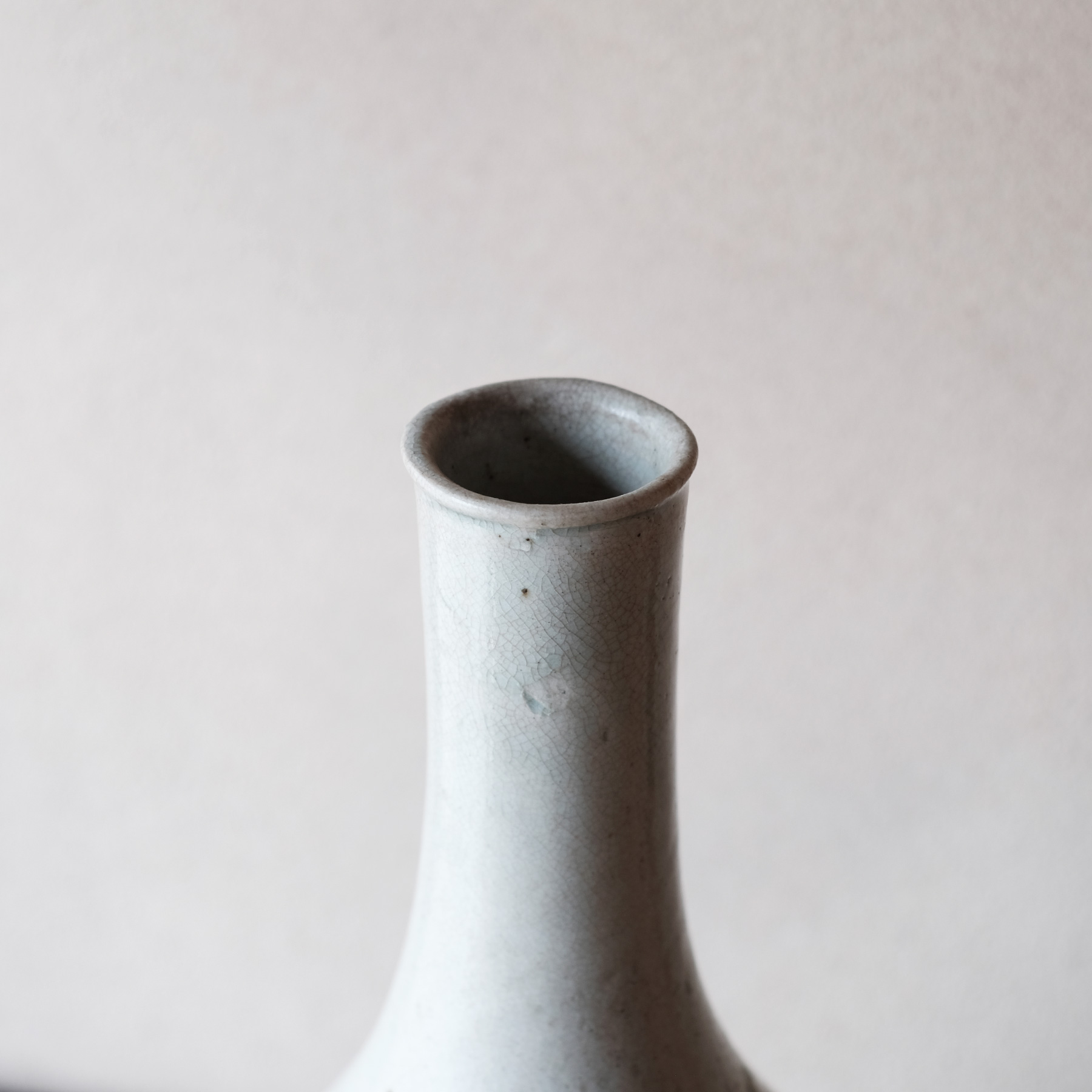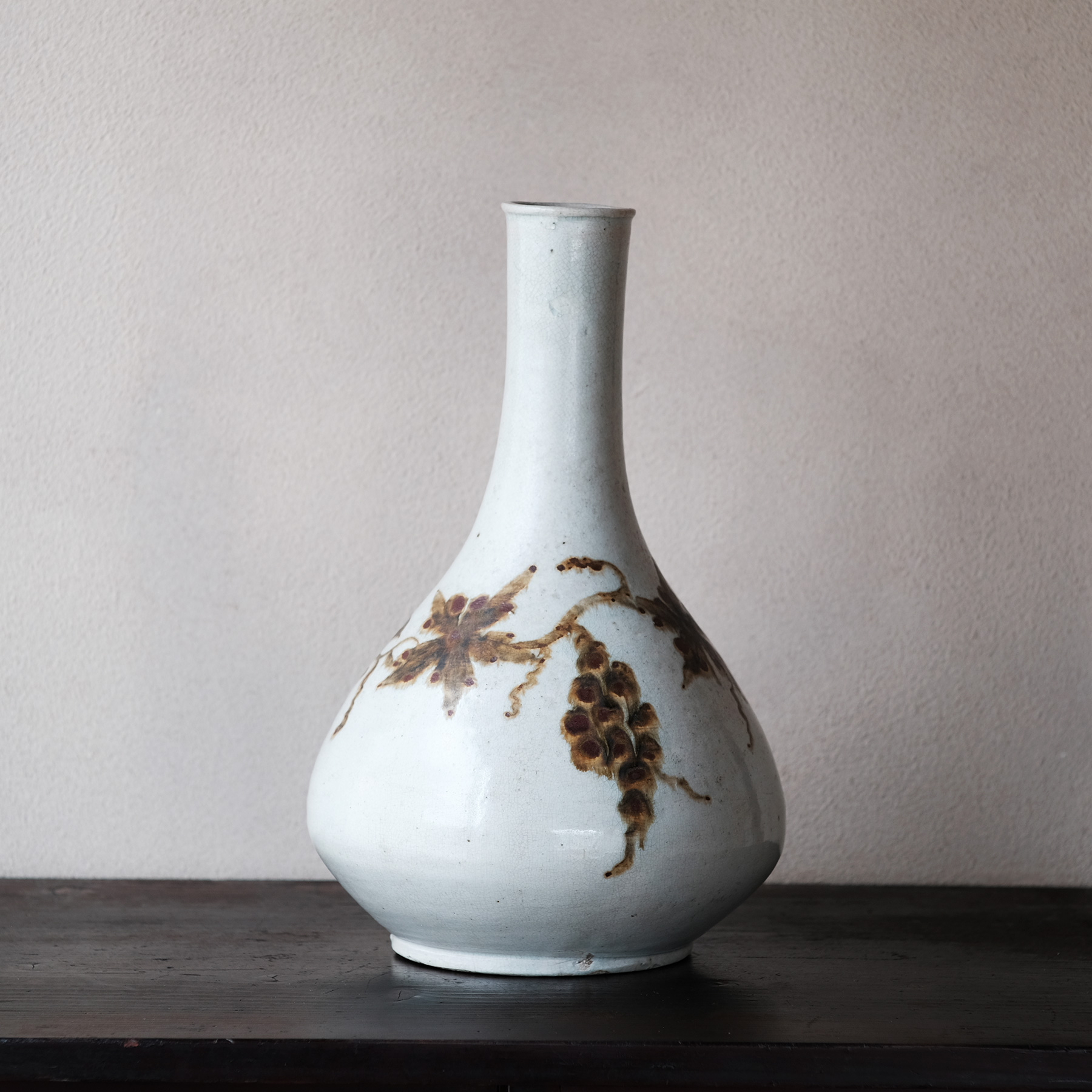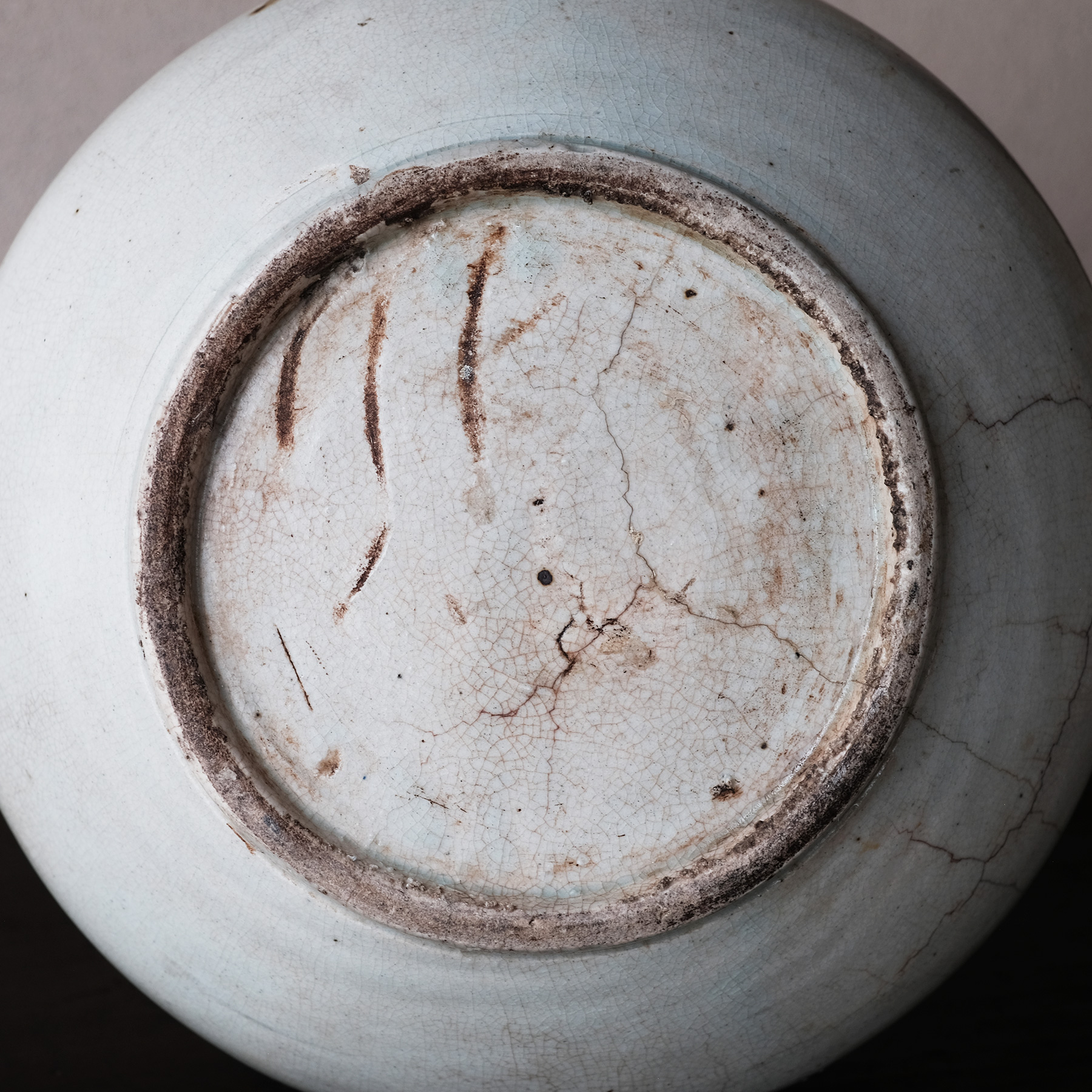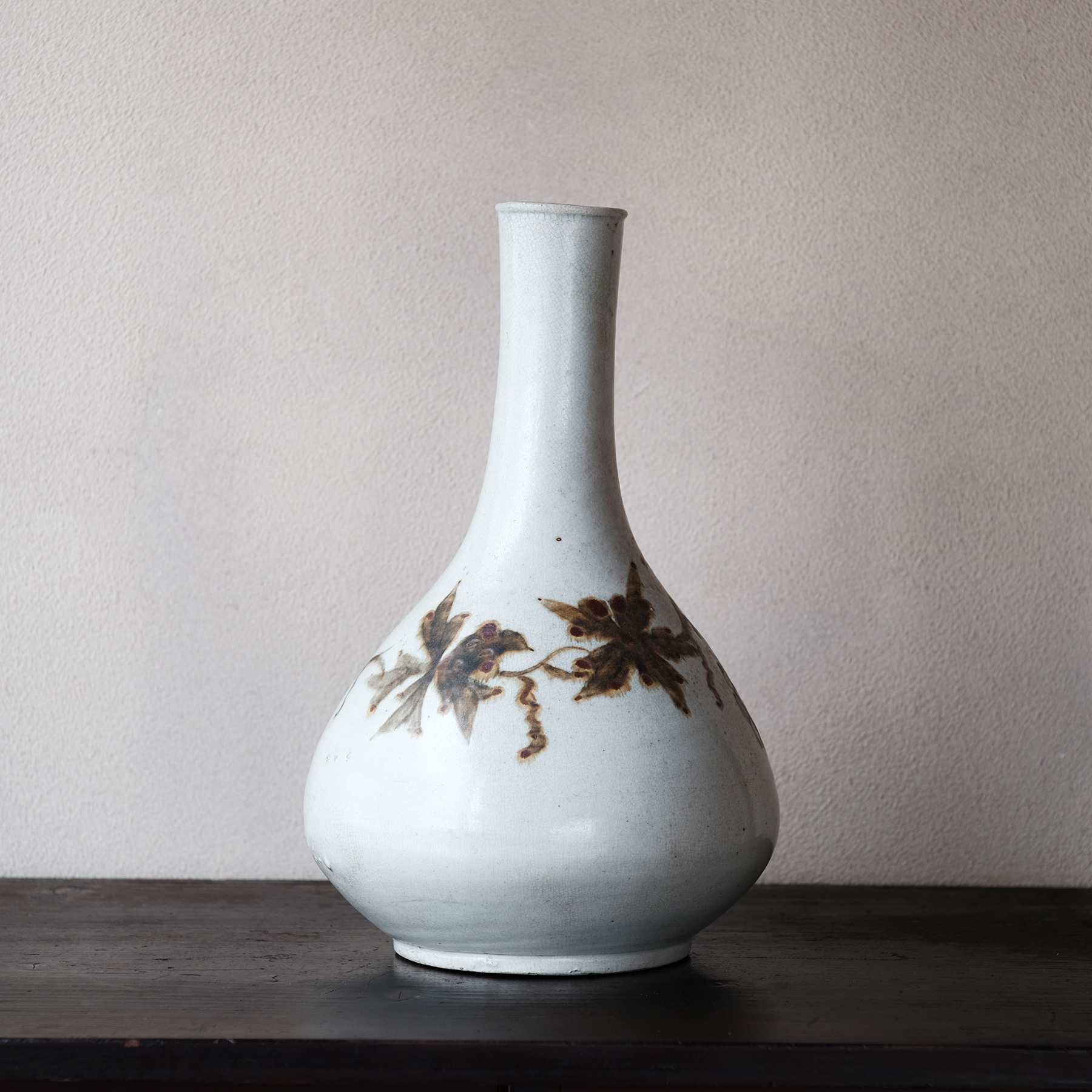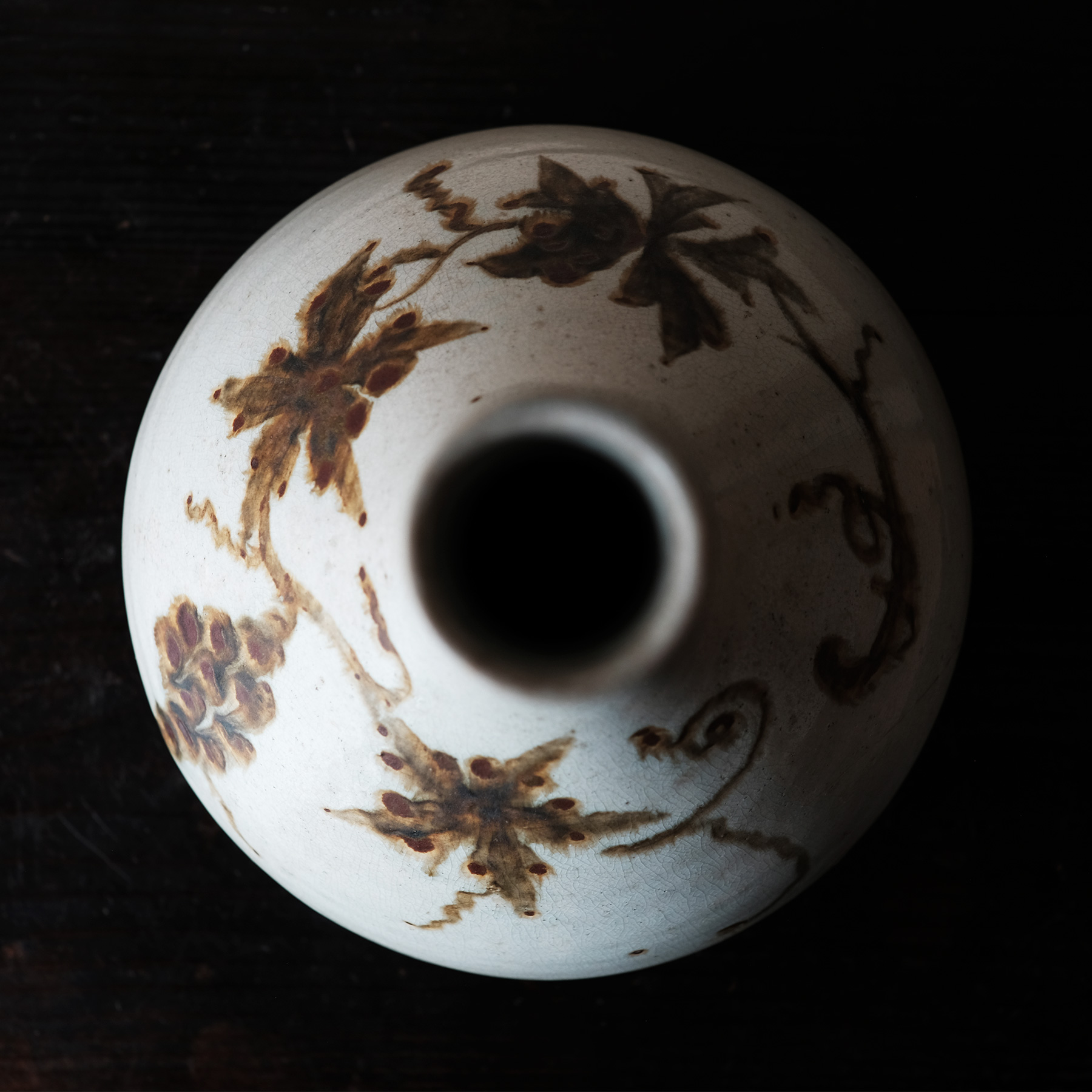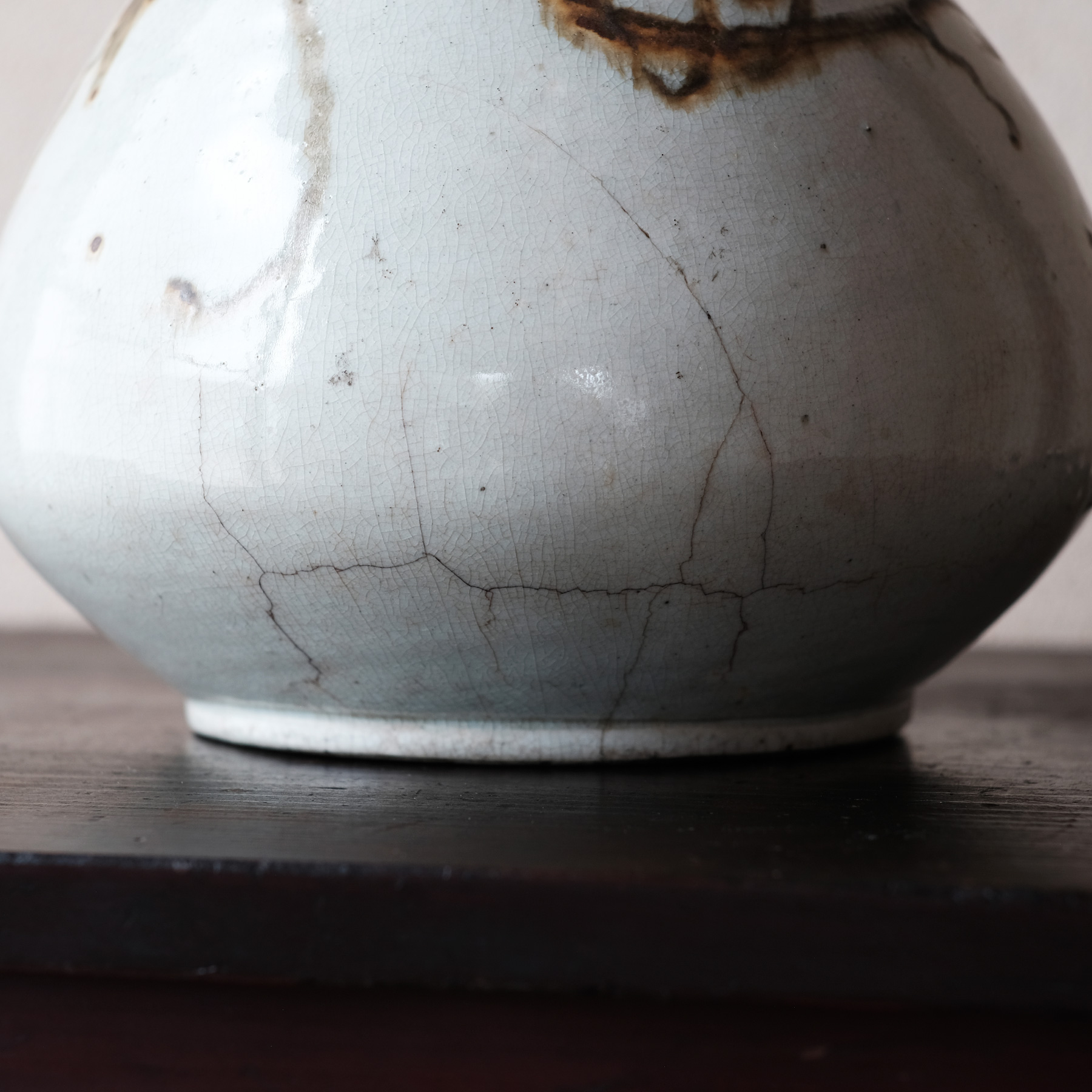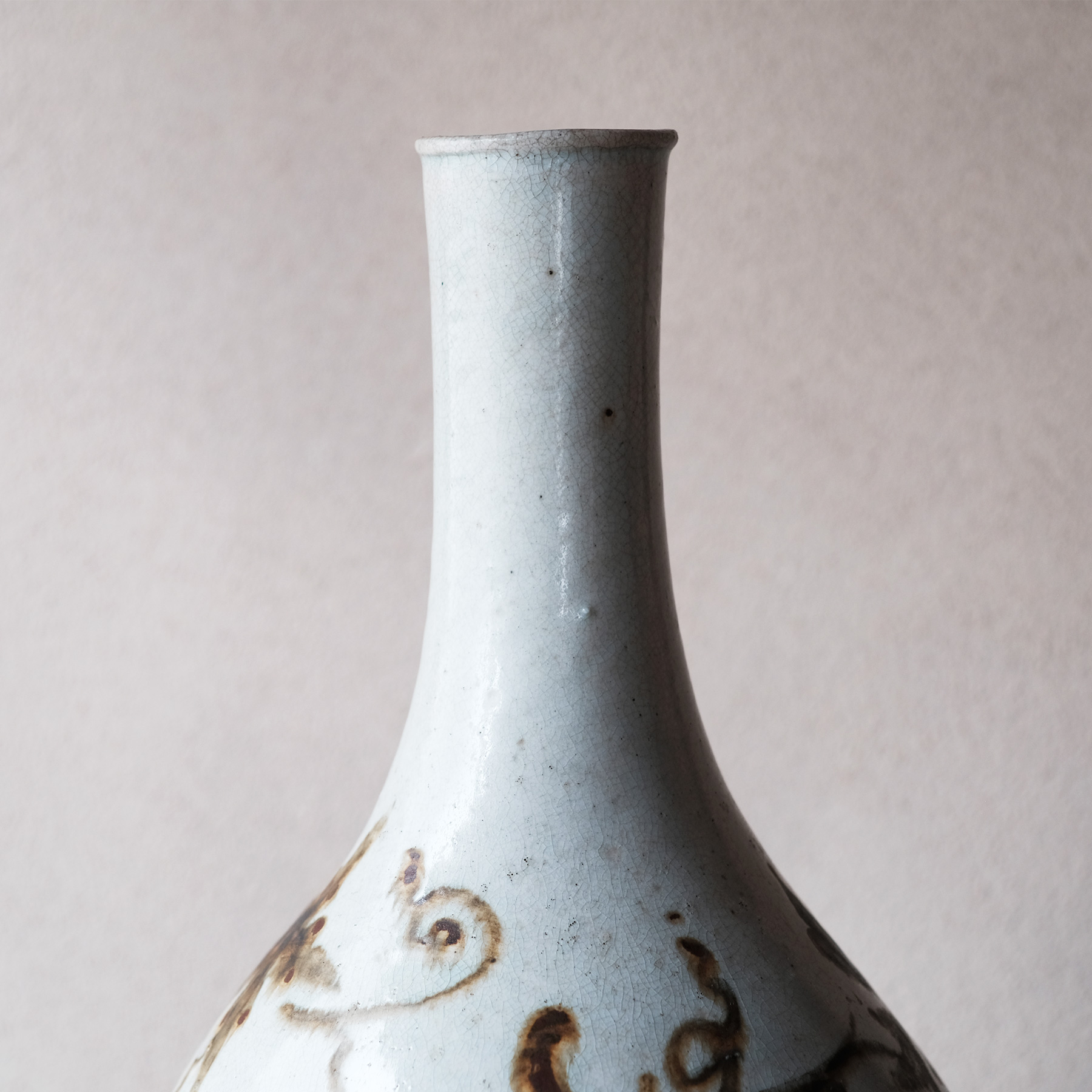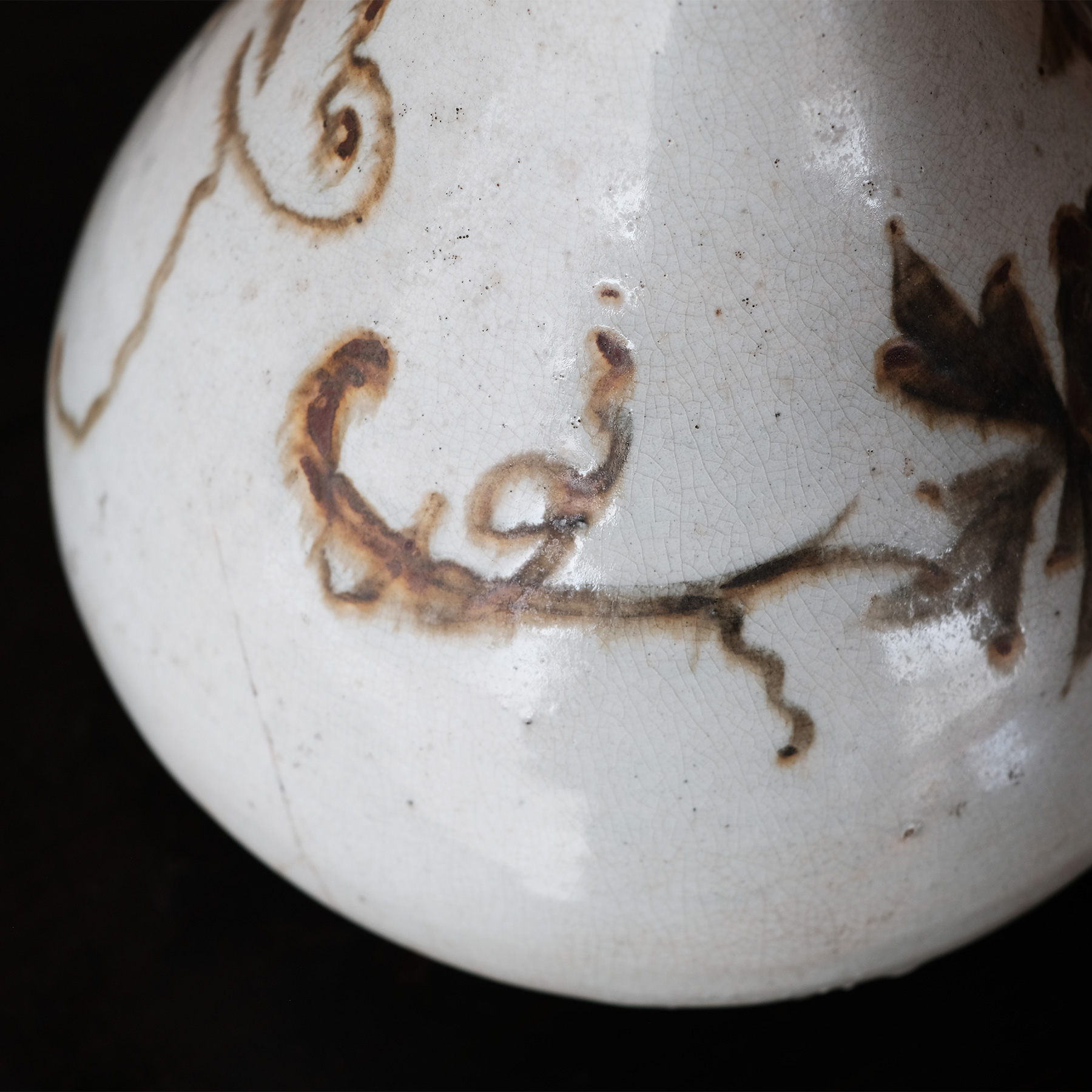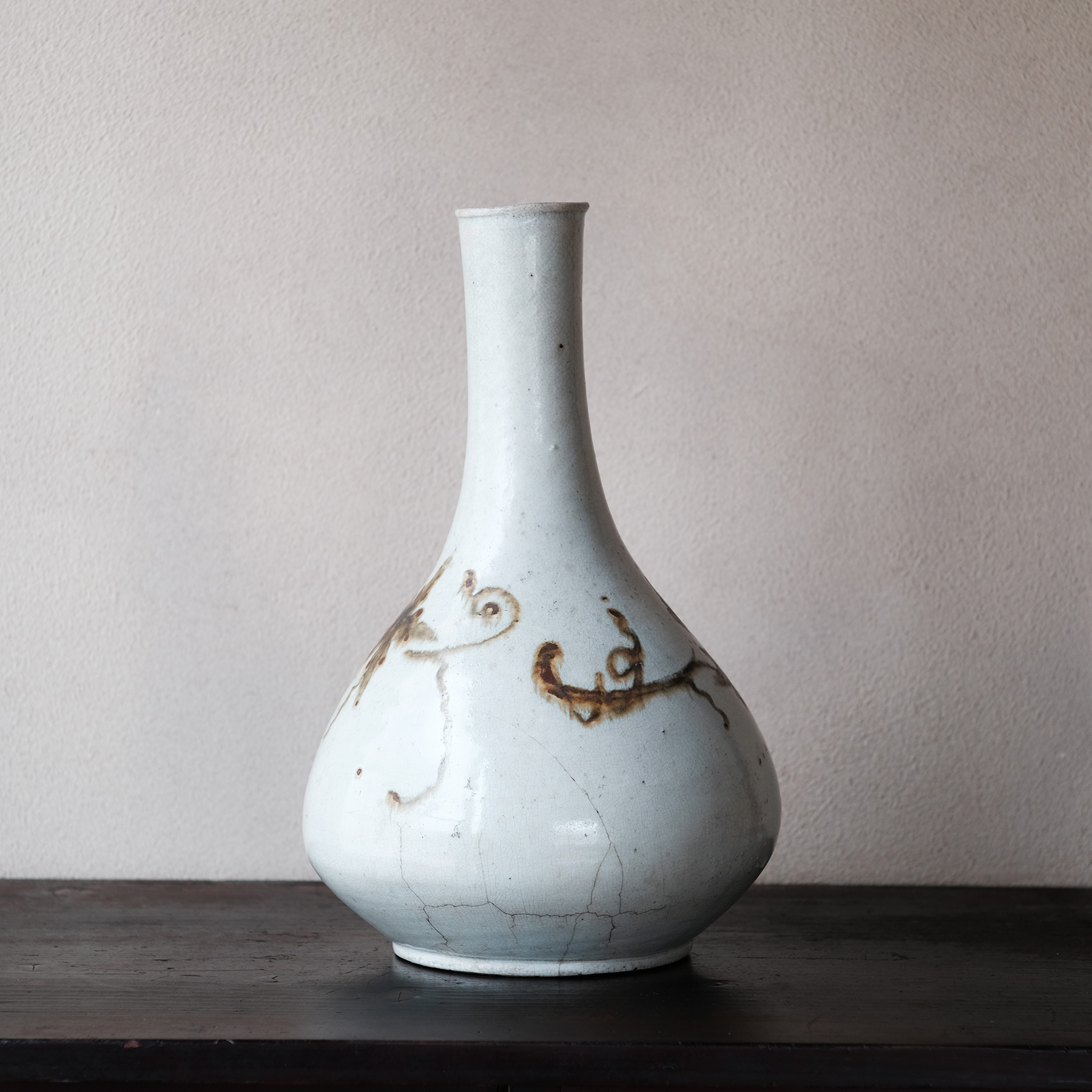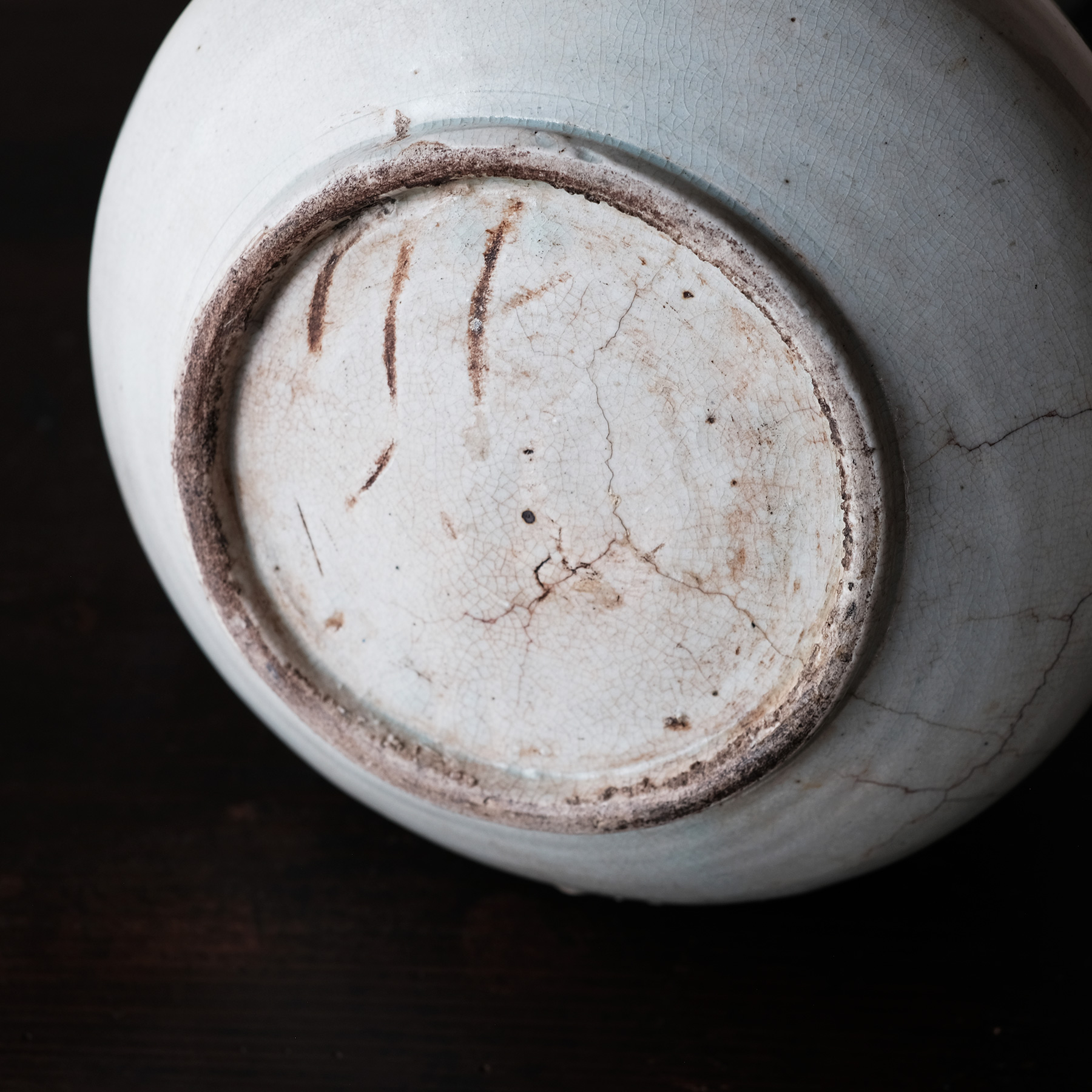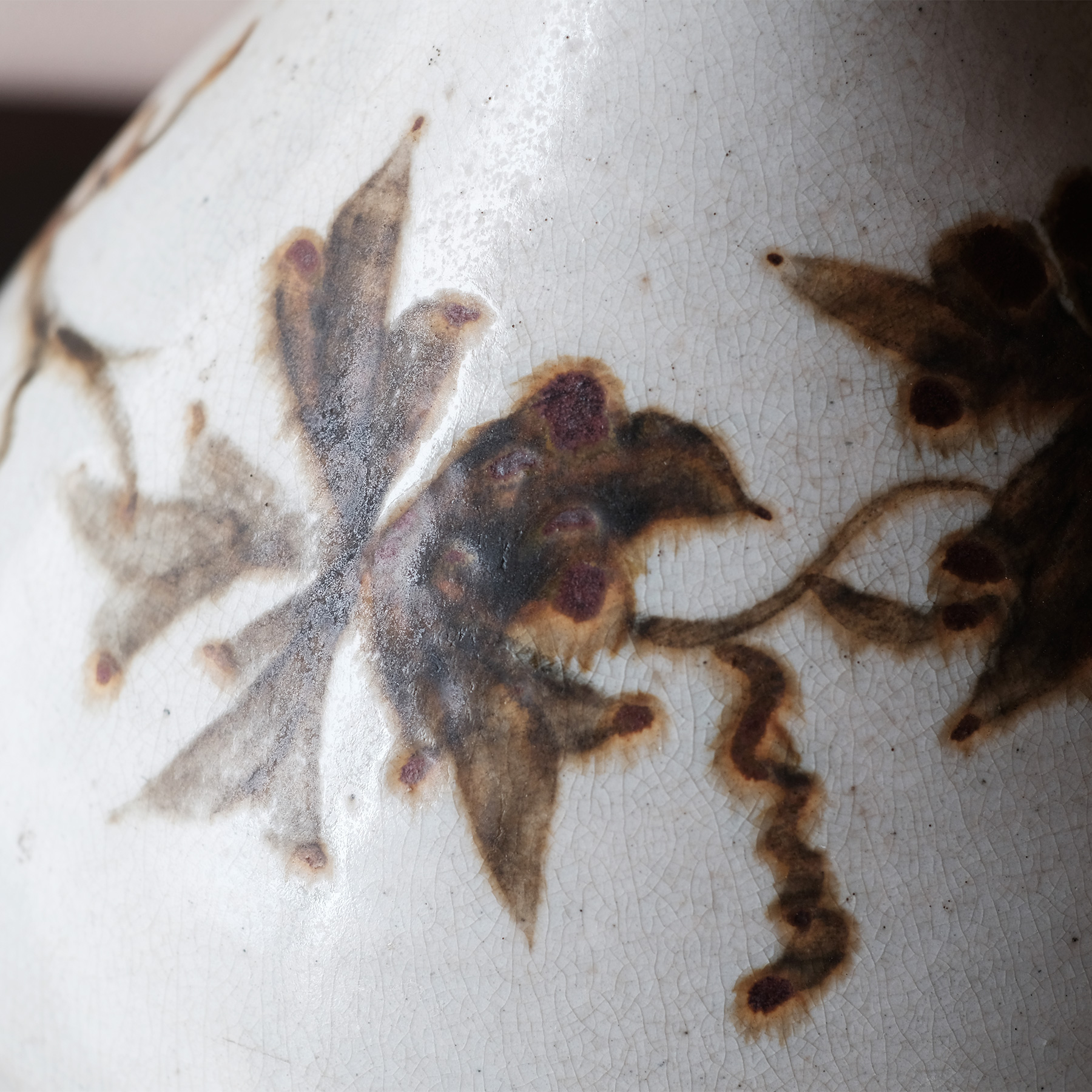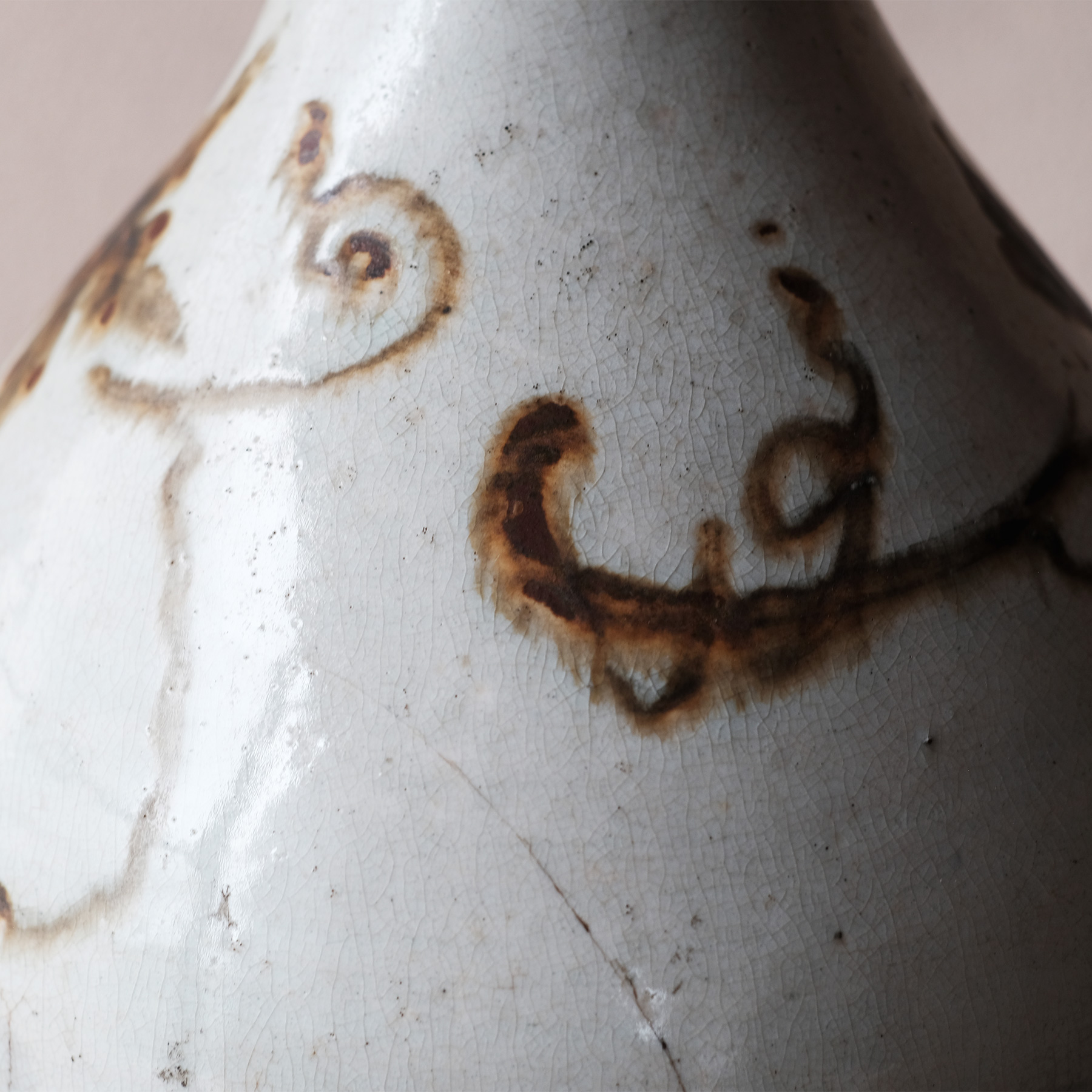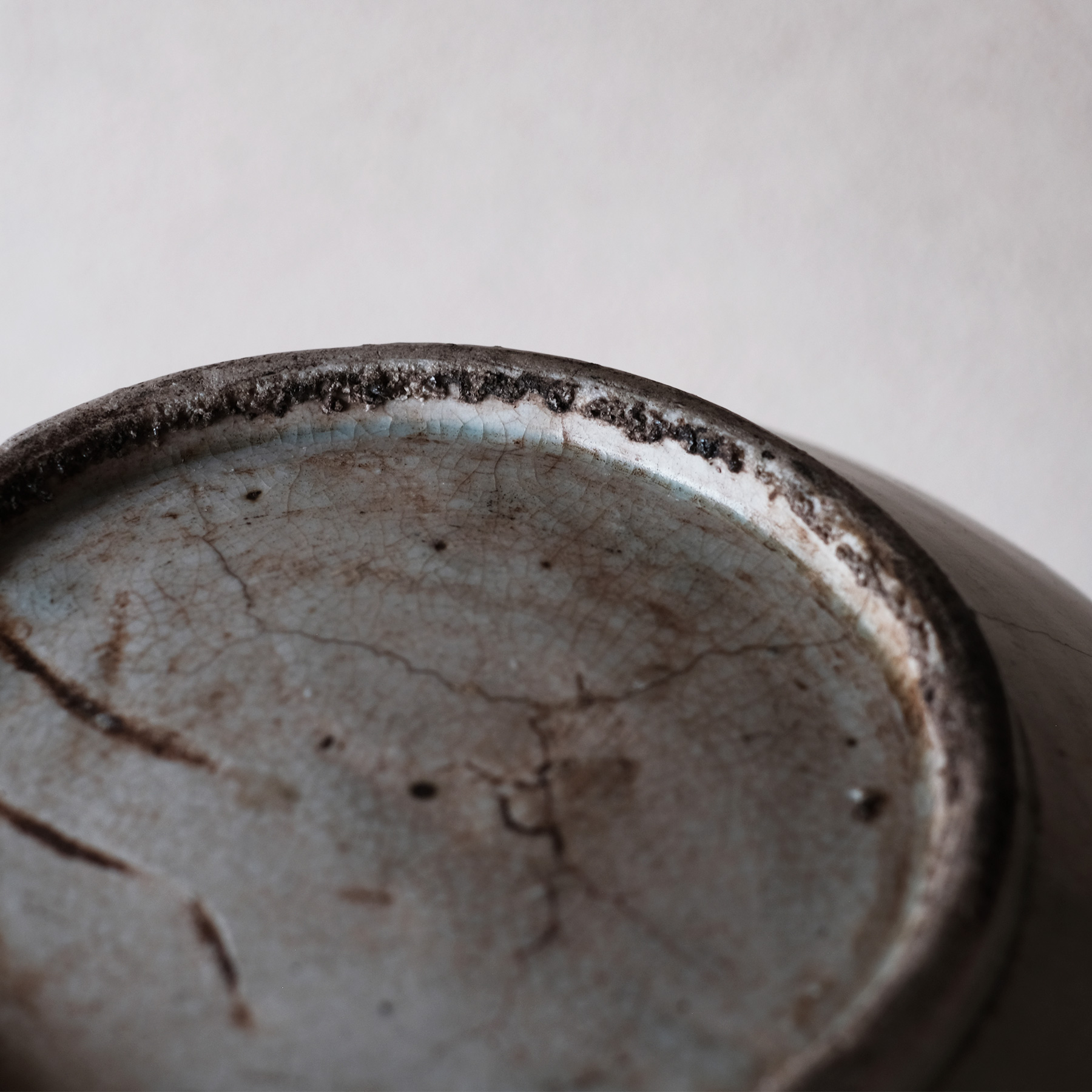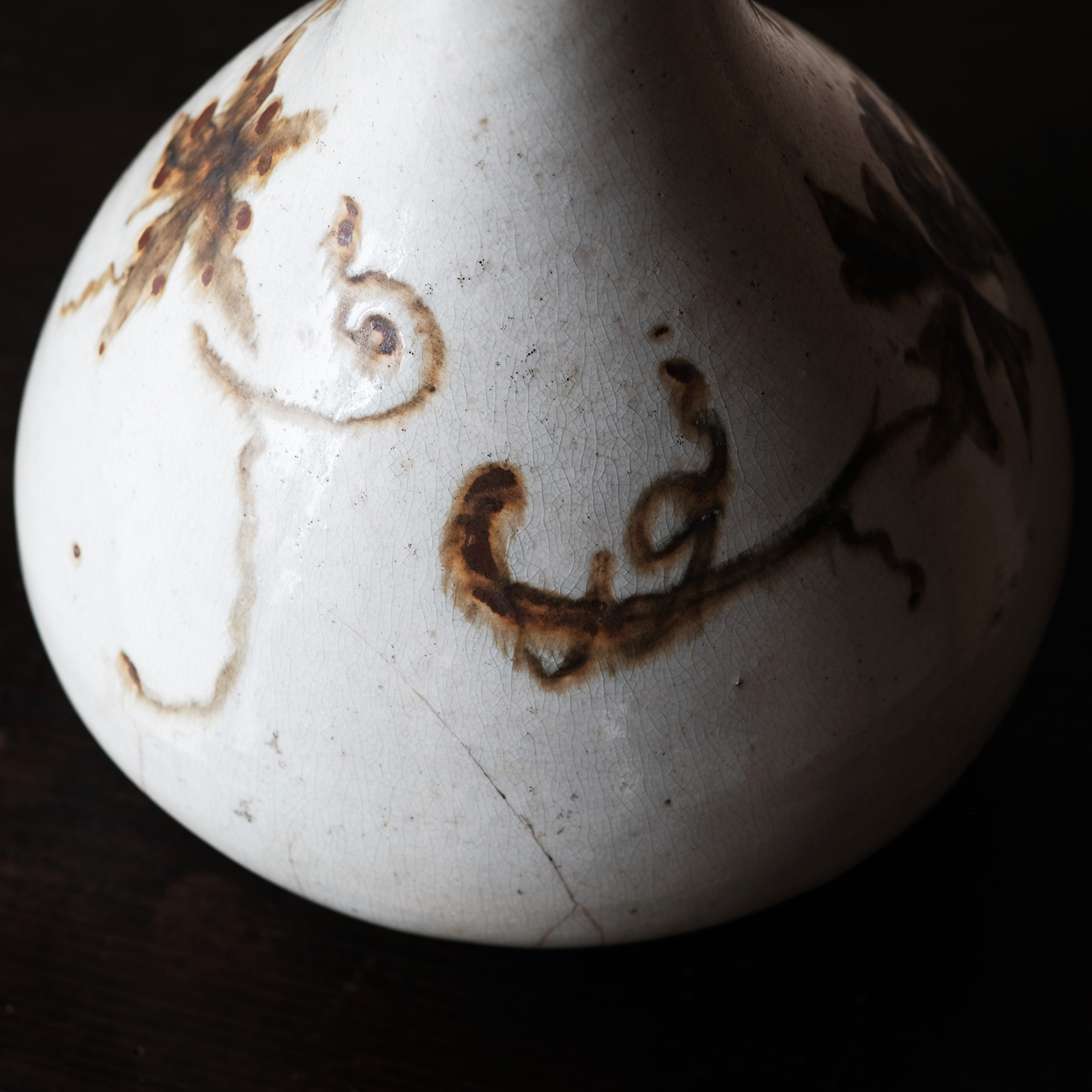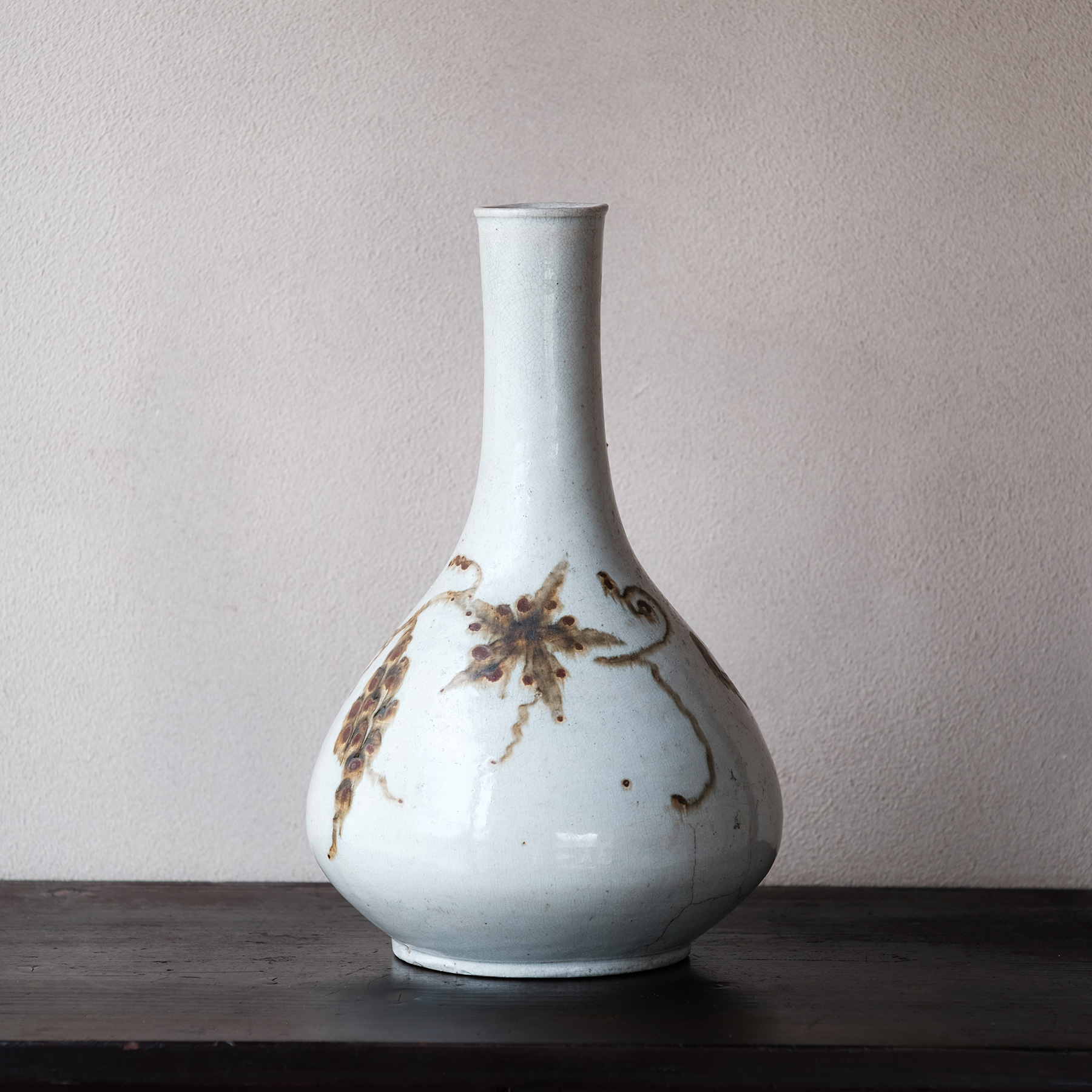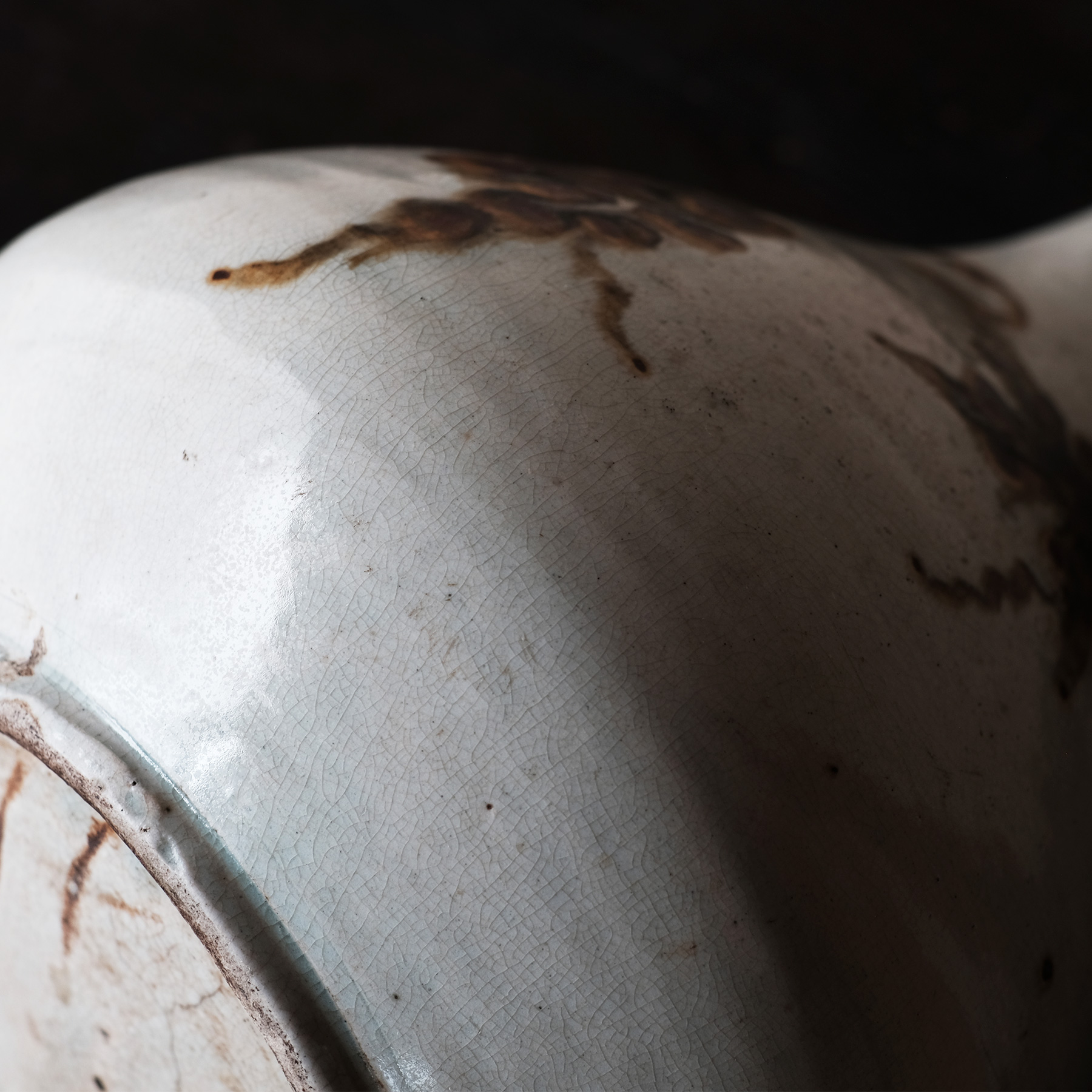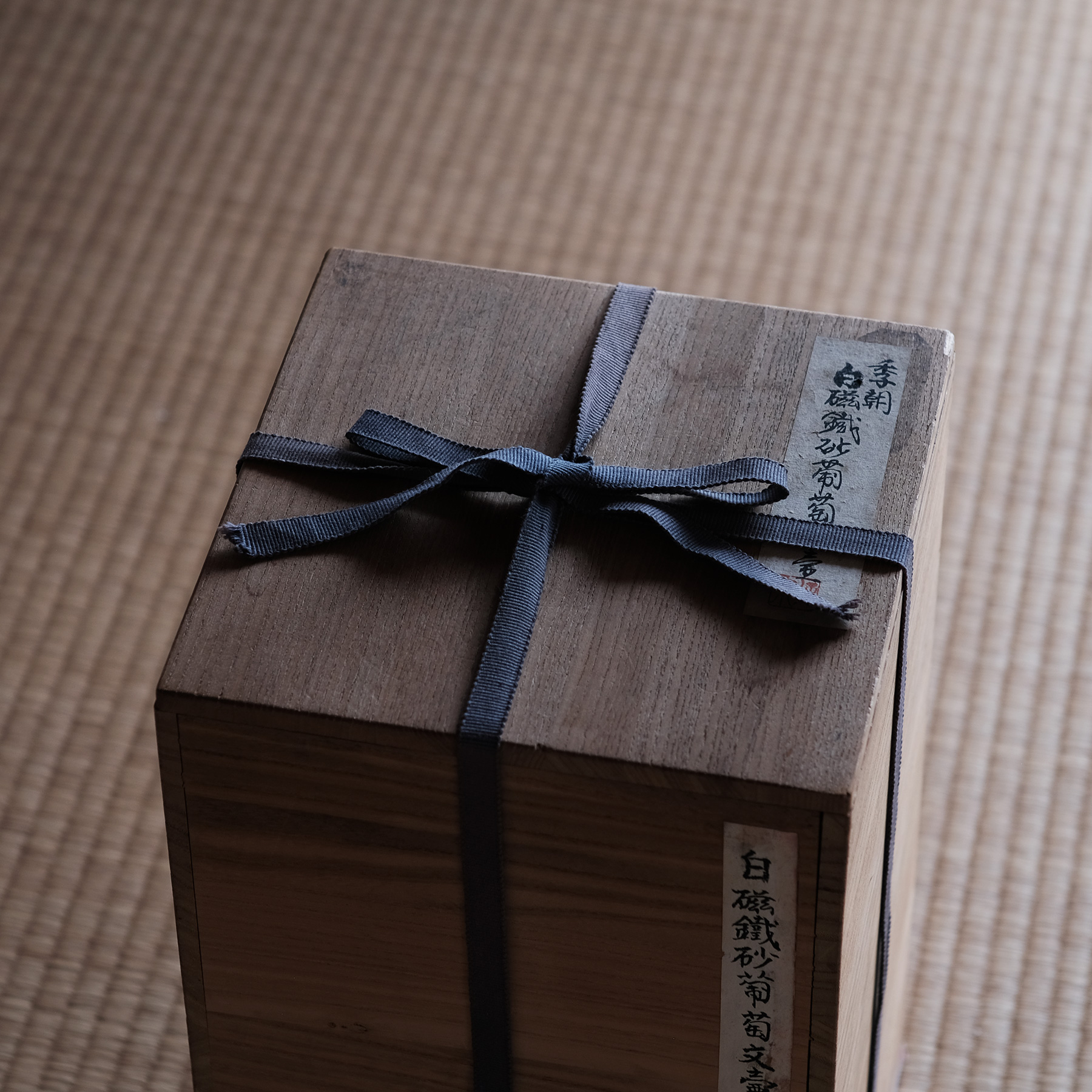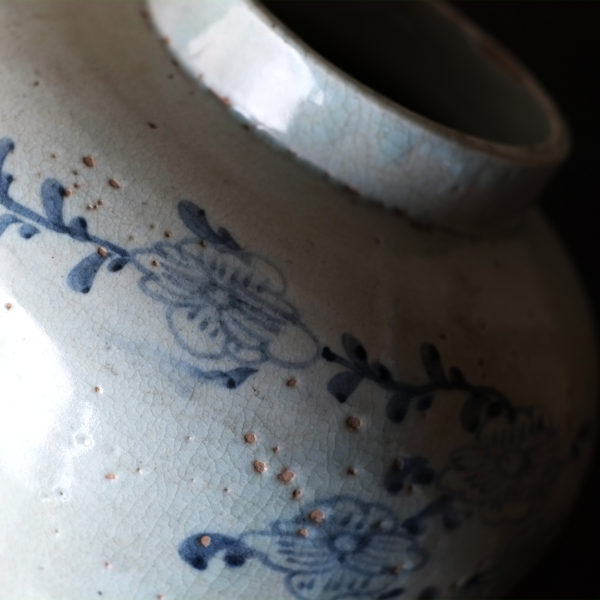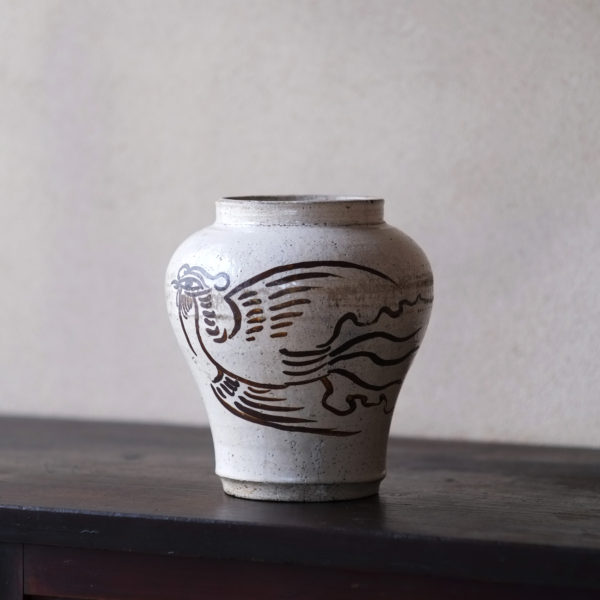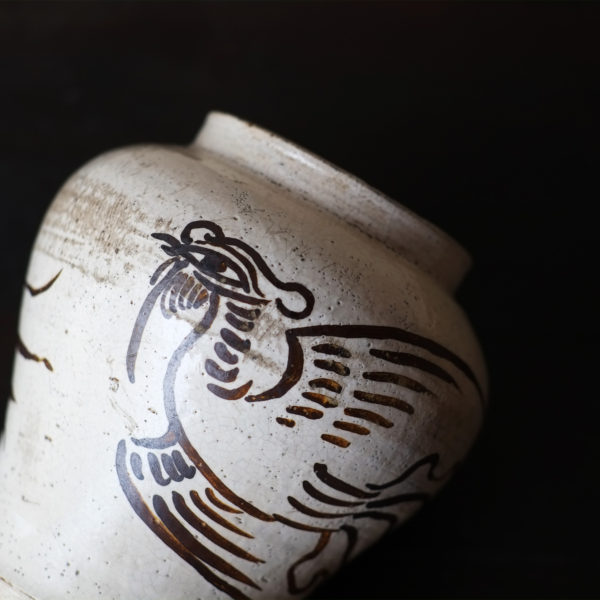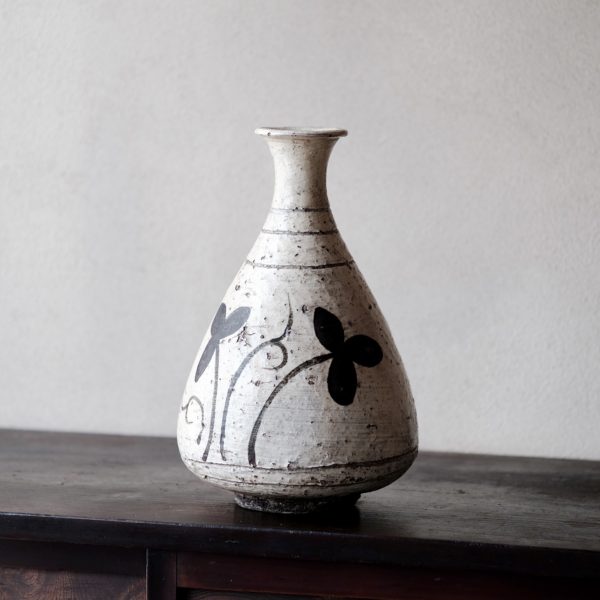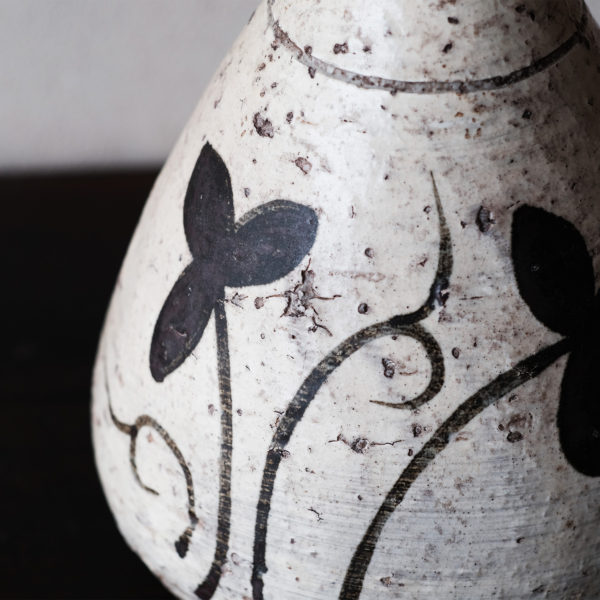Joseon Dynasty White Porcelain Vase with Grapevine Pattern in Underglaze Iron
ARCHIVEDA superb quality white porcelain vase fired in the late Joseon dynasty. Grapevines are elaborately depicted on the well-formed turnip-shape body in underglaze iron brown. The shape is derived from the Chinese influence of the time. And the splendid grape pattern indicates the genealogy of Korea’s famous ink painting, which turned grapevines into the central subject in the early Joseon dynasty by Hwang Jip-Jung and Yi Gye-ho and many other masters.
In the Korean peninsula, underglaze iron decoration on white porcelain emerged in the latter half of the 15th century. It reached its peak as a substitute for cobalt during the turmoil of the 17th century. This piece is one of the finest examples, co-produced with underglaze cobalt after the latter half of the 18th century, when the official kilns were established in Bunwon-ri, Gwangju. The delicate shape that becomes thinner toward the top is the characteristic of high-quality official kiln work. The harmony of a refined proportion and lyrical grape pattern showing reddish glow, sufficient blank space remaining with fine crackled white ground, creates an exquisite dignity.
The hairlines are running from the hip to the base, but there is no leakage. It fits in a box labelled “Joseon Dynasty White Porcelain Grape Design in Underglaze Iron Jar ”.
- The description will be updated as our research progresses.
- Images may differ in color from the actual products.
- Please read "Terms" when purchasing.

